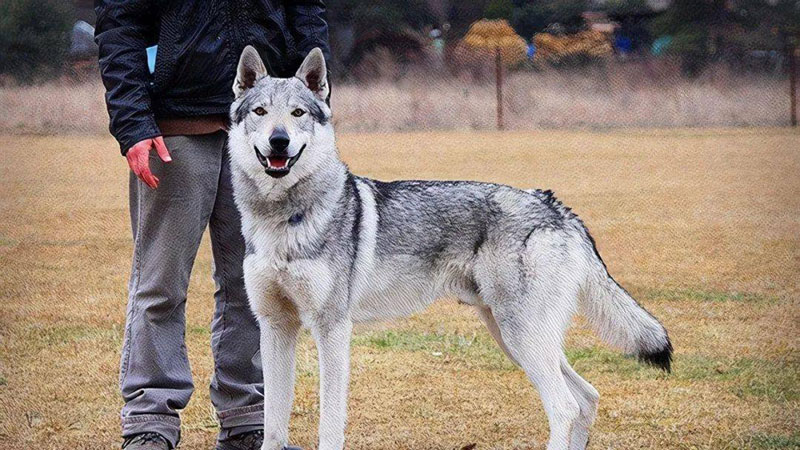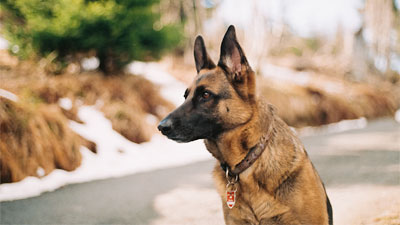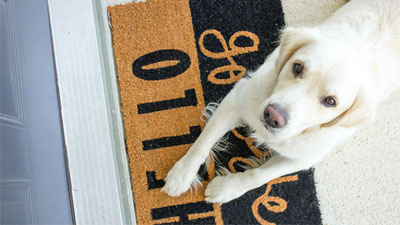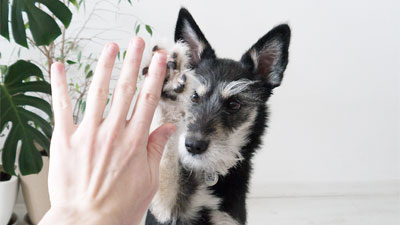- Size
- Smallest
- Small
- Small to Medium
- Medium
- Large
- Giant
- Characteristics
- Smartest
- Hypoallergenic
- Fluffy
- Best Guard
- Best Family
- Best for Kids
- Low Shedding
- Healthiest
- Police Dogs
- Most Calm
- Quietest
- Color
- White
- Black
- Grey
- Brown
- Blue
- Red
- Coat
- Hairless
- Short
- Long
- Origin
- Japan
- China
- Australia
- Germany
- Italy
- United States
- France
- Group
- Hound
- Terrier
- Herding
- Toy
- Working
- Sporting
The 'Stand' Command: A Crucial Yet Overlooked Training Cue

Amidst teaching your dog to sit and lie down, an oft-neglected yet vital position remains: the stand. Although not as frequently used as sitting or laying down, training your dog to stand upon cue offers more utility than one might imagine. This uncomplicated technique, employing lure and reward training or capturing behavior, proves both versatile and advantageous. Let's delve into why and how you should teach your dog to stand.
Why Use the 'Stand' Command?
Mastering the stand position can significantly simplify various interactions with your dog. Picture effortlessly fitting your dog's harness without their fidgeting or reluctance. Even cleaning your furry companion's paws after a stroll in the snow or rain becomes hassle-free when they remain still. In numerous day-to-day engagements, your dog's comprehension of the "stand" command can streamline routines and enhance cooperation.
Moreover, the stand position aids grooming sessions, including baths and brushing, offering tranquility during veterinary examinations. Rather than squirming or attempting to flee, your dog, when trained to stand, can calmly endure examinations, fostering a smoother process.
Furthermore, for dog sports enthusiasts, the stand command becomes invaluable. From conformation shows emphasizing still stances for evaluation to its application in Rally and Obedience at various competition levels, the stand position emerges as a fundamental cue.
Teaching Your Dog to Stand
To initiate the teaching process, here's a step-by-step guide employing the lure method:
Begin with your dog in a sitting position.
Hold a treat close to your dog's nose, then gently pull it directly away from them. As they follow the treat, they'll naturally transition into a standing posture.
Mark this action with a clicker, a verbal "Yes," or praise, promptly rewarding your dog while they remain standing.
Gradually transition from using a treat lure to an empty hand gesture to guide your dog into standing. Continue reinforcing the action with a click/mark/praise followed by a treat from your other hand.
Once your dog consistently responds to the hand signal, introducing the verbal cue "Stand" just before issuing the hand signal.
Over repetitions, your dog will associate the verbal cue with the action, responding solely to the cue.
Alternatively, you can capture the behavior itself by marking and rewarding instances when your dog naturally stands. Encourage this behavior by adding a hand signal and verbal cue after capturing it repeatedly.
Progression and Troubleshooting
Once your dog grasps the stand command, integrate "stay" into your training, commencing with brief intervals. Gradually extend the duration and introduce distractions after ensuring your dog can sustain the stand position for at least 30 seconds without diversion.
Should your dog initially resist transitioning from sit to stand during lure training, infuse enthusiasm and encouragement into your approach. Engage in playful antics or try luring from a different position to prompt action. Employ high-value treats to enhance motivation and participation.
During the lure fading process, if your dog struggles to follow the empty hand gesture, revert briefly to treat luring before attempting the gesture again. You might also enhance your hand's appeal by rubbing a fragrant treat between your fingers to entice your dog to stand.
Lastly, ensure prompt treat delivery while your dog is standing to reinforce the desired behavior. Maintain preparedness with treats in both hands during lure fading to guarantee timely rewards.
By diligently following these steps and troubleshooting potential hurdles, you'll successfully train your dog to stand on command, rendering it a valuable skill for various situations, from sports to vet visits, benefiting both you and your furry companion.
You May Also Like
 Dog Training TipsHow To Train Your Dog To Eye Contact
Dog Training TipsHow To Train Your Dog To Eye Contact Help & AdviceWhy Won't My Dog Learn To "Stand" Command?
Help & AdviceWhy Won't My Dog Learn To "Stand" Command? Dog Training TipsThe 'Wait' Command: Teaching Your Dog Patience and Discipline
Dog Training TipsThe 'Wait' Command: Teaching Your Dog Patience and Discipline Dog Training TipsThe Place Command: Teach Your Dog to Go to Their Place
Dog Training TipsThe Place Command: Teach Your Dog to Go to Their Place Dog Training TipsDog Tricks: Teach Your Dog to High Five
Dog Training TipsDog Tricks: Teach Your Dog to High Five Dog Training TipsTeaching Your Dog the "Sitting Pretty" or "Beg" Trick
Dog Training TipsTeaching Your Dog the "Sitting Pretty" or "Beg" Trick